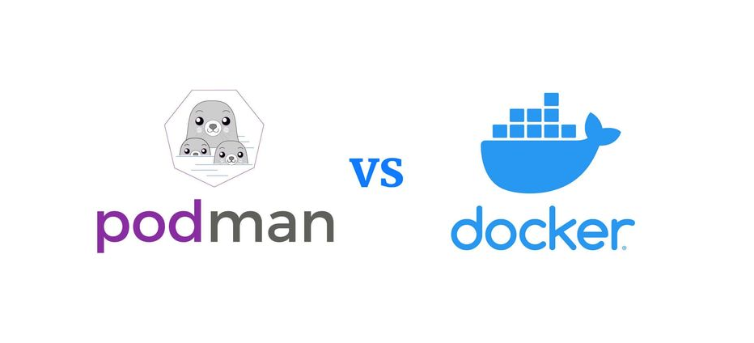Container orchestration tools are among the most important web development technologies today, with many powerful technologies competing for industry dominance.
Podman is a Red Hat product designed to build, run, and manage containers with a Kubernetes-like approach that is attracting the attention of developers as a solid alternative to the major players.
We're going to compare Podman vs Docker, the standard containerization tool for almost a decade, as these two technologies have fundamental differences but are also perfectly suited to work together.
Table of Contents
What is Container Orchestration?
What is Docker?
What is Podman?
Podman vs Docker: Differences
➤ Architecture
➤ Root privileges
➤ Security
➤ Systemd
➤ Building images
➤ Docker Swarm
➤ All in one vs modular
Conclusion
Frequently asked questions
What is Container Orchestration?
Containers are standalone software packages that include the code and its dependencies: libraries, tools, settings, and runtime. The industry quickly adopted containers as a core component of containerization architecture since they provided faster deployment and scalability and worked uniformly across the development and staging phases.
Containers are lightweight, portable, and secure, providing an insulated space compatible with any environment. By separating the software from the operating system, containers can be transferred to any location (from Linux to Windows systems, for instance), avoiding bugs and errors preventing them from working.
Some of the most popular orchestration technologies are Docker,
Docker Swarm, Kubernetes, and Nomad, all of which we already analyzed and compared in our blog.

What is Docker?
Docker is the standard container management technology. It has so much weight in the industry that when most people think of containers, they think of Docker.
Docker became the Swiss Army knife of container orchestration, comprising many features before other specialized alternatives were available. It had to grow as a standalone, self-sufficient tool, capable of handling all of the developers' needs as the complexity of managing containers increased.
It quickly became an all-in-one solution containing tools developed for specific tasks. One is Docker Swarm, a native Docker feature that lets you cluster and schedule Docker Engines, and another tool designed to create and manage a swarm of containers.
Docker's subsidiary tools handle all the tasks related to container orchestration, from load balancing to networking, making it the industry's primary choice, besides being the established reference technology.
But this self-sufficiency has its shortcomings. Though it is a powerful system to run and create containers in all of its stages of development, other tools have difficulties interacting with it. As many other specialized tools for specific tasks started to pop up in recent years, Docker became a starting point for many developers who assigned some of the operations to other more lightweight platforms and tools.
What is Podman?
What is Podman? Podman is an open-source, Linux-native tool designed to develop, manage, and run containers and pods under the Open Container Initiative (OCI) standards. Presented as a user-friendly container orchestrator developed by Red Hat, it's the default container engine in RedHat 8 and CentOS 8.
It is one of a set of command-line tools designed to handle different tasks of the containerization process, that can work as a modular framework. This set includes:
Podman - pods and container image manger
Buildah - a container builder
Skopeo - a container image inspection manager
runc - container runner and feature builder to podman and buildah
crun - optional runtime that allows greater flexibility, control, and security for rootless containers
These tools can also function with any OCI-compatible container engine, like Docker, making it easy to transition to Podman or use it with an existing Docker installation. And can Kubernetes use Podman? Yes it can. In fact, they are similar in some ways.
Podman has a different conceptual approach to containers. As hinted by the name, Podman can create container "pods" that work together, a feature resembling the Kubernetes pods. Pods organize separate containers under a common denomination to manage them as single units.
The main benefit is that developers can share resources, using different containers for the same application inside a pod: a container for the frontend, another for the backend, and a database. Pod definitions can be exported to a Kubernetes-compatible YAML file and be applied to a Kubernetes cluster, allowing containers to advance faster into production.
Another defining feature of Podman is that it is daemon-less. A daemon is a program running in the background to handle services, processes, and requests with no user interface. It's a unique take on the container engine, as it doesn’t actually depend on a daemon, but instead launches containers and pods as child processes.
You may be asking "Why should I use Podman?" It has unique advantages as a development and management tool that makes it a viable and interesting alternative to Docker in the appropriate context. Or a powerful complement to work side by side with Docker since it supports a Docker-compatible CLI interface.

Podman vs Docker: Differences
According to Google Trends, both Docker and Podman have had fluctuating interest over the last five years, with Docker being consistently more popular. But right now, these two container orchestration tools have reached the peak interest of users.
Podman and Docker share many features in common but have some fundamental differences. These don't make one better than the other but might be decisive to select the most appropriate for a specific project.
Architecture
Docker uses a daemon, an ongoing program running in the background, to create images and run containers. Podman has a daemon-less architecture which means it can run containers under the user starting the container. Docker has a client-server logic mediated by a daemon; the latter does not need the mediator.
Root privileges
Podman, since it doesn't have a daemon to manage its activity, also dispenses root privileges for its containers. Docker recently added rootless mode to its daemon configuration, but Podman used this approach first and promoted it as a fundamental feature. And this is because of the next point.
Security
Is Podman safer than Docker? Podman allows for non-root privileges for containers.Rootless containers are considered safer than containers with root privileges. In Docker, daemons have root privileges, making them the preferred gateway for attackers. Containers in Podman do not have root access by default, adding a natural barrier between root and rootless levels, improving security. Still, it can run both root and rootless containers.
Systemd
Without a daemon, Podman needs another tool to manage services and support running containers in the background. Systemd creates control units for existing containers or to generate new ones. Systemd can also be integrated with Podman allowing it to run containers with systemd enabled by default, without any modification.
By using systemd, vendors can install, run, and manage their applications as containers since most are now exclusively packaged and delivered this way.
Building images
As a self-sufficient tool, Docker can build container images on its own. Podman requires the assistance of another tool called Buildah, which expresses its specialized nature: it is made for running but not building containers on its own.
Docker Swarm
Podman does not support Docker Swarm, which may rule it out of the options for projects using this feature since using Docker Swarm commands will generate an error. Podman has recently added support for Docker Compose to make it Swarm compliant, overcoming this limitation. Docker, naturally, works well with Swarm.
All in one vs modular
And maybe this is the crucial difference in both technologies: Docker is a monolithic, powerful, independent tool with all the benefits and drawbacks implied, handling all of the containerization tasks throughout their entire cycle. Podman has a modular approach, relying on specialized tools for specific duties.
Conclusion
Podman and Docker are both powerful container orchestration tools with unique advantages and differences. While Docker has been the industry standard for almost a decade, Podman's innovative architecture and approach to container management make it a solid alternative for developers, especially those working in Linux environments.
Whether you choose to use one or another, or a combination of both, understanding their differences and similarities will help you make the best decision for your project's needs.
Frequently asked questions
Can Podman replace Docker?
Yes, Podman can replace Docker for many use cases. it provides a similar container runtime environment and tooling as Docker, and in some cases, it may offer additional benefits such as improved security and flexibility.
How is Podman different from Docker?
Podman is different from Docker in that it does not require a separate daemon to run containers, making it more lightweight and secure. It also has better support for running containers as non-root users, which can improve security. Additionally, Podman can run Kubernetes pods natively without needing a separate tool like Docker Compose.
Do you want to know about ? Hint: it should be Docker + Kubernetes.
Is Podman safer than Docker?
Podman is sometimes considered safer than Docker because it does not require a separate daemon to run containers, which reduces the attack surface for potential security vulnerabilities. It also has better support for running containers as non-root users, which can improve security.
Which is best: Podman or Docker?
Which is best: Podman or Docker? Whether Podman is better than Docker depends on the specific use case and requirements. Sometimes, Podman may offer better security and flexibility, but Docker may be more appropriate for certain environments or applications. Evaluating both options is important as determining which best meets the project's needs.



